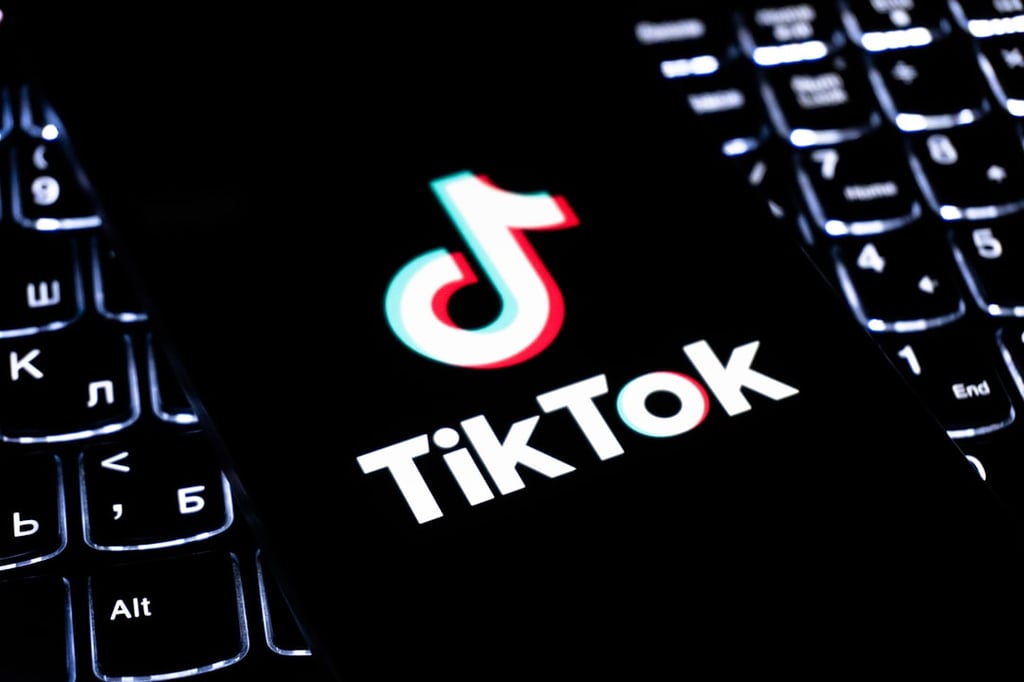The allure of betting on a longshot in a tight race — and seeing it play out — never wanes for sports fans.
In the race to 4G that’s heating up between two competing wireless networking standards, it would be foolish to dismiss the Long Term Evolution (LTE) standard as the longshot against its better-known rival, WiMAX.
While WiMAX (define), or Worldwide Interoperability for Microwave Access, is seen by industry experts as a few strides ahead of LTE, the LTE standard could cross the finish line as the end-all mobile network that users are eagerly awaiting.
WiMAX and LTE (define) are, in simple terms, Wi-Fi and GSM connectivity on steroids. What’s at stake with their burgeoning growth? Mobility nirvana tied to what pundits call 4G technology — always-on connectivity, real-time multimedia experiences and robust applications without the dropped calls, lost data packets and the all-too-common dead zone scenario users have today.
One reason LTE may win the race is that it continues to gain supporters. The latest Nortel Networks (NYSE:NT), a longtime WiMAX advocate that just switched loyalties this month. Although it is not deserting its WiMAX investments, the voice and data network equipment provider is placing a bigger bet on LTE. It claims that WiMAX progress has slowed.
LTE, the natural progression of Global System for Mobile communications (GSM) and Universal Mobile Telecommunications System (UMTS), promises to make everything from mobile-video sharing to music downloads faster.
WiMAX, based on the 802.16e standard, features a transmission speed more than five times faster than current wireless networks. It lets users send huge data files from a smartphone, switch from a mobile phone network to a LAN (define) without redialing, share documents in real-time videoconferences and essentially transport all the benefits of an office’s networked PC to conduct business on the road.
Both networking standards promise big improvements over the often-pokey speeds current users are stuck with.
“It’s like how we went from local calling to cellular calling, or from dial-up to broadband access,” Carmi Levy, senior VP, strategic consulting, AR Communications, told InternetNews.com. With LTE, there’s an ease of building out the network from its GSM base compared to the significant infrastructure buildout that WiMAX has taken thus far.
However, WiMAX deployments are already up and running while LTE’s formal debut is still two to three years out.
For Nortel, the change of heart on WiMAX could be that WiMAX adoption expectations are a bit bleak at the moment, despite momentum by leading carriers.
A recent Chadwick Martin Bailey survey reported that while 69 percent of enterprises use Wi-Fi for data access and 48.2 percent use 3G cellular service, a whopping 53.5 percent have no plans to move to WiMAX.
Analysts say the 4G evolution is a race, but wide open beyond the LTE and WiMAX camps. Plus, consider the simple fact that there is no official standard 4G definition as yet.
“We don’t really know what 4G technology will arrive because it’s an evolution at this point,” Jeff Kagan, telecom analyst, told InternetNews.com.
“Right now there are more questions than answers,” Kagan said, adding that “I don’t see a winner or loser. It’ll just be more of what we have now.”
So who are the main groups behind the two networking approaches?
The LTE Camp
AT&T, the leading carrier, is committed to LTE, as are Verizon Wireless and Nortel.
AT&T believes LTE is “better suited” than WiMAX when it comes to mobility, according to spokesman Warner May. “It provides advancements and a graceful transition from 3G technologies,” he added.
The fact that AT&T relies on precursor GSM networking standards is one reason for the move, though adoption is “tied to a whole bunch of issues,” said May. “LTE will have a healthy system and is the leading technology.”
A carrier’s current technology and future available spectrum are drivers in what route carriers are taking, according to pundits.
“The tilt to LTE or WiMAX is tied to the state of a carrier’s network and what they can leverage,” noted Levy.
Future services, such as speedier broadband connectivity over today’s DSL and cable modem capabilities, are also determining where the carriers place their investment bets.
“For AT&T, voice calls are still a priority, while Verizon is intent on maintaining a strong wireless business so they’re going to stick with what’s funneling the majority of revenue on their installed based,” Jack Gold, principal analyst for research firm J.Gold Associates, told InternetNews.com.
“Nothing is going to go away and true mobile ubiquity isn’t going to arrive until at least 2012,” said Gold.
The WiMAX Camp
One carrier with a big stake in WiMAX is Sprint-Nextel (NYSE: S), the fourth largest telecommunications vendor in terms of subscribers (even though it boasts the largest network).
Sprint points to a growing user base of WiMAX as one of its appealing features right now.
WiMAX subscribers are predicted to increase worldwide from 3.40 million to 27 million by 2011, according to a January 2007, Yankee Group report.
Sprint CEO Dan Hesse, speaking at this week’s NXTcomm trade show, stated “mobile’s best days may still be ahead with data usage on the rise.” He described WiMAX as “wireless at rocket speed,” noting Sprint has a two-year head start ahead of competitors.
Just last month, Sprint announced it was joining forces again with former partner Clearwire (NASDAQ: CLWR) in a $14.5 billion joint venture to create a national WiMAX carrier. The venture also involves Intel, Google, Comcast, Time Warner Cable and Bright House Networks.
This follows Sprint’s announcement in August 2006 that it would deploy the nation’s first WiMAX network using the company’s 2.5GHz spectrum holdings, which reach an estimated 85 percent of the households in the top 100 U.S. markets.
The carrier has also formed an infrastructure development ecosystem called Xohm (pronounced ‘Zoam’) with charter partners Intel, Samsung, Motorola and Nokia.
“Xohm is the removal of the barriers to the seamless use of the wireless Web, making it fast, easy and affordable for a whole new group of users,” John Polivka, Sprint Nextel, Xohm public relations, told InternetNews.com.
Sprint Nextel selected WiMAX because it was the best fit against the company’s four critical metrics: time to market, performance, business model support and ecosystem, said Polivka.
“Wireless data is the sweet spot. This is a new era of social networking and user-generated content,” said Polivka.
It’s All About The 4G Destination
The fact that Motorola (NYSE: MOT) is a member of Xohm, however, doesn’t mean it’s not an LTE fan as well.
The beleaguered handset maker has decided to hedge its bets and throw some support at both technologies, even though it clearly favors WiMAX at this point.
Motorola has spent about half a billion dollars on WiMAX chips and devices, making it a leading global WiMAX technology player, according to Fred Wright, Motorola senior VP, cellular networks and WiMAX.
It currently has 19 contracts for commercial WiMAX systems in 16 countries, and has already shipped more than 3,600 access points and 120,000 CPEs and PC cards.
“WiMAX devices are the last piece to happen,” Wright told InternetNews.com.
In this week alone, Motorola issued three WiMAX-related press releases. One touted
that its WiMAX WAP 25400 base station achieved the WiMAX Forum Certified seal of approval, which puts Motorola among the first to have products earn certification.
The WiMAX Forum plans to certify more than 100 mobile WiMAX products this year.
Wright said both technologies are very good but that “WiMAX is here and now and helping to accelerate the commercial LTE.”
This article was first published on InternetNews.com.
-
Ethics and Artificial Intelligence: Driving Greater Equality
FEATURE | By James Maguire,
December 16, 2020
-
AI vs. Machine Learning vs. Deep Learning
FEATURE | By Cynthia Harvey,
December 11, 2020
-
Huawei’s AI Update: Things Are Moving Faster Than We Think
FEATURE | By Rob Enderle,
December 04, 2020
-
Keeping Machine Learning Algorithms Honest in the ‘Ethics-First’ Era
ARTIFICIAL INTELLIGENCE | By Guest Author,
November 18, 2020
-
Key Trends in Chatbots and RPA
FEATURE | By Guest Author,
November 10, 2020
-
Top 10 AIOps Companies
FEATURE | By Samuel Greengard,
November 05, 2020
-
What is Text Analysis?
ARTIFICIAL INTELLIGENCE | By Guest Author,
November 02, 2020
-
How Intel’s Work With Autonomous Cars Could Redefine General Purpose AI
ARTIFICIAL INTELLIGENCE | By Rob Enderle,
October 29, 2020
-
Dell Technologies World: Weaving Together Human And Machine Interaction For AI And Robotics
ARTIFICIAL INTELLIGENCE | By Rob Enderle,
October 23, 2020
-
The Super Moderator, or How IBM Project Debater Could Save Social Media
FEATURE | By Rob Enderle,
October 16, 2020
-
Top 10 Chatbot Platforms
FEATURE | By Cynthia Harvey,
October 07, 2020
-
Finding a Career Path in AI
ARTIFICIAL INTELLIGENCE | By Guest Author,
October 05, 2020
-
CIOs Discuss the Promise of AI and Data Science
FEATURE | By Guest Author,
September 25, 2020
-
Microsoft Is Building An AI Product That Could Predict The Future
FEATURE | By Rob Enderle,
September 25, 2020
-
Top 10 Machine Learning Companies 2021
FEATURE | By Cynthia Harvey,
September 22, 2020
-
NVIDIA and ARM: Massively Changing The AI Landscape
ARTIFICIAL INTELLIGENCE | By Rob Enderle,
September 18, 2020
-
Continuous Intelligence: Expert Discussion [Video and Podcast]
ARTIFICIAL INTELLIGENCE | By James Maguire,
September 14, 2020
-
Artificial Intelligence: Governance and Ethics [Video]
ARTIFICIAL INTELLIGENCE | By James Maguire,
September 13, 2020
-
IBM Watson At The US Open: Showcasing The Power Of A Mature Enterprise-Class AI
FEATURE | By Rob Enderle,
September 11, 2020
-
Artificial Intelligence: Perception vs. Reality
FEATURE | By James Maguire,
September 09, 2020
SEE ALL
ARTICLES









